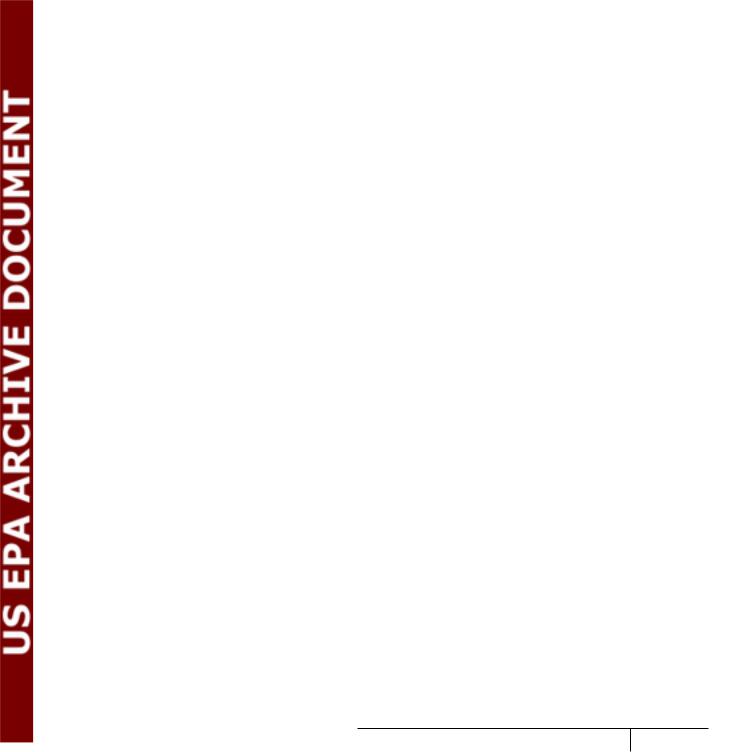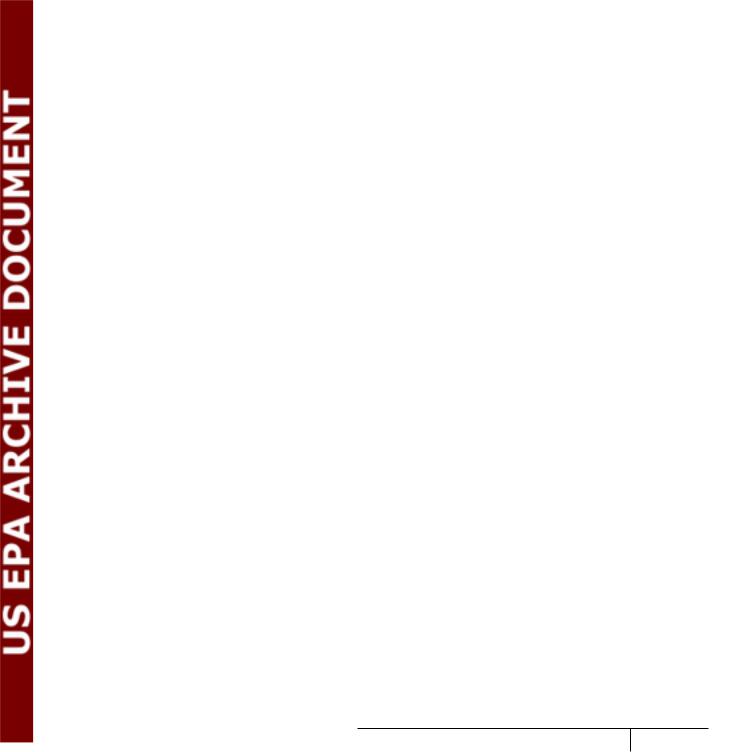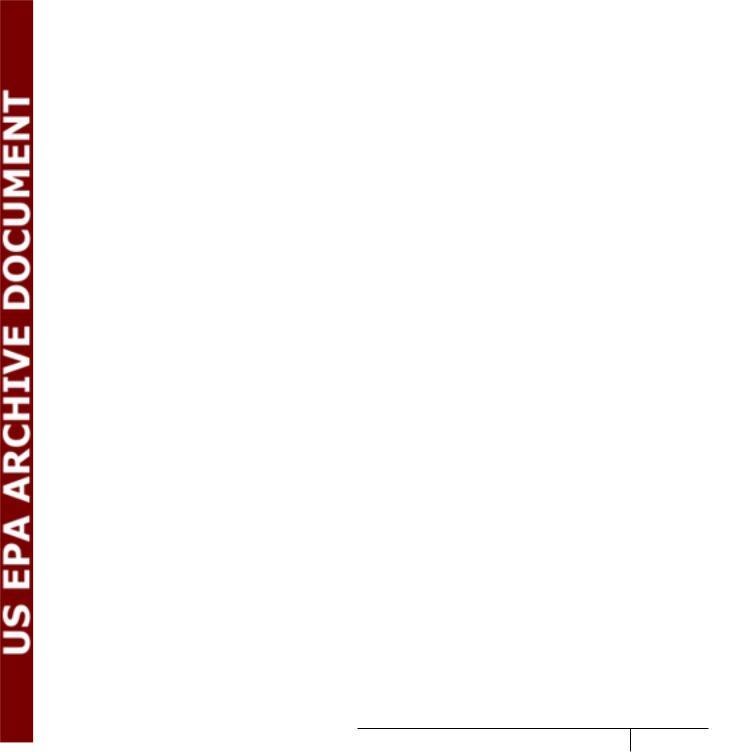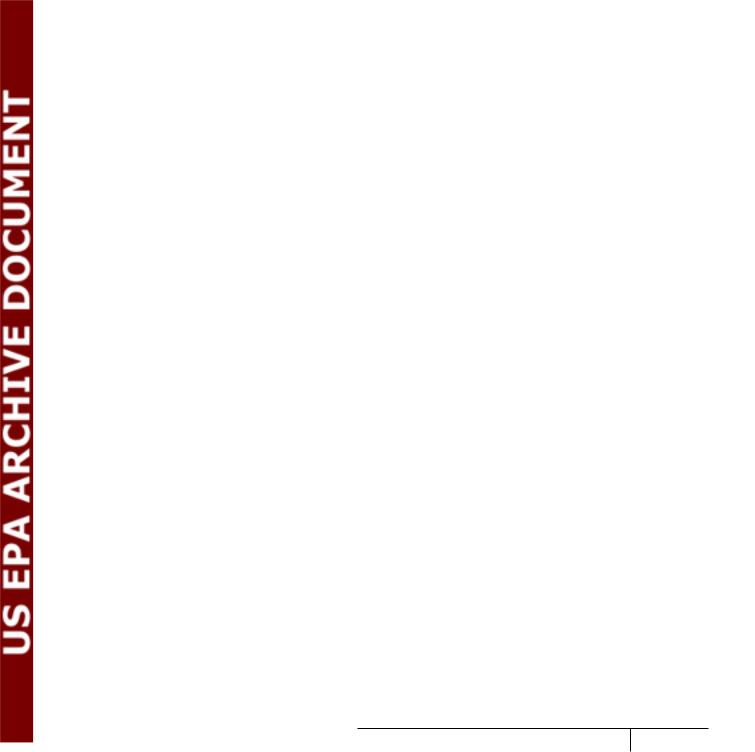
nevada
.pdf
Recycling Wave Green |
Plans Business Sample |
|
|
130 Writing Business Plans for Recycling Enterprises

Brokers |
Alaric Inc. |
|
Peter C. Blythe |
Able Plastics |
2110 N. 7th Street |
Barry Shemaria |
Tampa, FL 33619 |
4500 Ashburn Walk |
(813) 626-0458 |
Marietta, GA 30069 |
|
(404) 565-1522 |
Anderson Plastics, Inc. |
|
Elmer Anderson |
Ace Trading Company |
2211 6th Street |
J.K. Kob |
Miami, OK 74354 |
50-50 230th Street |
(918) 542-7614 |
Oakland Gardens, NY 11364 |
|
(718) 224-1666 |
Bridge Chemical Company |
|
Scott Ho |
Allied Deals, Inc. |
2710 North Brompton |
Viren Rastogi |
Pearland, TX 77581 |
230-5th Avenue |
(713) 436-1220 |
New York, NY 10001 |
|
(212) 532-7644 |
Capco |
|
P.O. Box 4 |
Asian Export Material Supply Co. |
Columbia, OH 44408 |
John Wong |
(216) 482-4686 |
11 Suban Place |
|
Newton, MA 02161 |
Coast Polymers |
(617) 332-7929 |
Jerry Malcolm |
|
9368 East Stewart/Gray Road |
Calbag Metals Company |
Downey, CA 90241 |
Warren Rosenfeld |
(310) 803-8781 |
P.O. Box 10067 |
|
Portland, OR 97210 |
D.S.P. Co., Inc. |
(503) 226-3441 |
Bud Arbo |
|
P.O. Box 15 |
Chemiplas |
Leominster, MA 01453 |
Howard Hackney |
|
14950 Heathrow Forest Pkwy. |
Doyle Plastics |
Houston, TX 77032 |
Tom Doyle |
(713) 442-4728 |
9720 Grandview |
|
Overland Park, KS 66212 |
Coren Mills |
(913) 381-4229 |
Herman Coren |
|
P.O. Box 158 |
|
Gladwyne, PA 19035 |
|
(215) 525-4565 |
|
DLM American Plastics |
|
Larry Markin |
|
111 Pfingsten Road |
|
Deerfield, IL 60015 |
|
(312) 776-0840 |
|
Acco Waste Paper |
|
Chris Neal |
|
314 Probandt Street |
|
San Antonio, TX 78204 |
|
(210) 223-2618 |
|
Sample Business Plans |
Green Wave Recycling |
|
|
Writing Business Plans for Recycling Enterprises 131

Recycling Wave Green |
Plans Business Sample |
|
|
Manufacturers
DuPont Canada Inc. J.P. Crocker
201 South Blair Street Whitby, ON LIN 5S6 (41) 430-5921
Embrace Systems Corp. Bob Boryszewski
300 Pearl Street, Ste 200 Buffalo, NY 14202 (716) 842-6032
Federal Plastics Corp. Peter N. Triano
715 South Avenue E. Crawford, NJ 07016 (908) 272-5800
Free-Flow Packaging Corp. James Jensen
1093 Charter Street Redwood City, CA 94063 (415) 364-1145
Hancor Inc.
Sandy Simons
P.O. Box 1047 Findley, OH 45839 (419) 424-8272
Image Carpets Inc. John Mathis
P.O. Box 5555 Armchee, GA 31305 (404) 235-8444
Iowa Plastics Virg Houtkouper 322 North Main
Sioux City, IA 51250 (712) 722-0692
Jeanell Sales Corp. Paul Spears
Sharon Industrial Parkway Sharon, TN 38255
(901) 456-2681
Duratecch Industries
Al Cockrum
P.O. Box 536
Lake Odessa, MI 48849 (616) 374-0240
Envipco Composites John Weiss
1600 Dolwick Drive Erlanger, KY 41018 (606) 283-2150
Foam Molding Company of Arkansas 2503 Water Town Road
Rogers, AR 72756 (501) 6363540
Hammer’s Plastic Corp. Ted Yenglilng
P.O. Box 866 Woodstock, GA 30188 (404) 926-4118
Harmon Associates Corp. William Schenger
86 Garden Street Westbury, NY 11590 (516) 997-3400
International Plastics Steve McClure
185 Commerce Center Greenville, SC 29615 (803) 297-8000
J.M. McConkey & Co., Inc. Don Knievel
P.O. Box 1690 Sumner, WA 98390 (206) 863-8111
JPS Elastometrics Corp. David Lee
395 Pleasant Street Northampton, MA 01060 (413) 586-8750
132 Writing Business Plans for Recycling Enterprises

GLASSTEKS, INC.
Sample Business Plan #2
Glassteks, Inc.
Location: |
Sands, Oregon |
Business Description: |
Collection of waste glass for remanufacture into glass silica. New |
|
silica can be used as a substitute for sand in such applications as |
|
glass blasting, filler in non-skid mats, glass chips laid in concrete |
|
and pipe casting. |
Founder: |
William James LeDuc |
Year Founded: |
1994 |
Starting Capital: |
Seeking $2,800,000 in debt financing. Founder is contributing |
|
$1,000,000 equity cash and collateral. |
Sales 1st Year: |
$1,180,000 |
Sales 3rd Year: |
$6,348,800 |
Glassteks, Inc. is a unique market driven company formed to take advantage of an aggressive recycling effort in the state of Oregon. This document is designed to leverage commercial financing of $2,800,000 for the company to reach its full potential as the dominate processor of waste glass feedstock in the region.
Sample Business Plans |
Glassteks, Inc. |
|
|
Writing Business Plans for Recycling Enterprises 133

.Inc Glassteks, |
Plans Business Sample |
|
|
TABLE OF CONTENTS
I Executive Summary
II Description of Business
III The Market
IV The Competition
V Market Share
VI Location
VII Pricing
VIII Promotion
IX Form of Ownership
X Management
XI Financial Forecasts
A.Financial Data
B.Production Schedules
C.Salaries and Benefits
D.Other Significant Assumptions
E.Statement of Cash Flows
F.Balance Sheet
G.Projected Profit and Loss
134 Writing Business Plans for Recycling Enterprises

RECYCLING GLASS FOR THE MANUFACTURE OF GLASS SILICA
Company Name: GLASSTEKS, INC.
Executive Summary
The State of Oregon made an early commitment to the collection of recyclable materials, long before markets for these materials were fully developed. Much progress has been made since the mid-1980s, and more markets for products made from some recovered recyclables, including glass are evolving. The recycling infrastructure is continuing to develop but some regions of the country, particularly rural regions, collecting recyclable feed stock and re-manufacturing for other purposes is still a virgin opportunity.
Drawing on materials from Northwestern Oregon, Glassteks plans to capture and recycle 960 tons of glass annually. Both glass containers and “waste glass” (defined as plate or window glass) will be collected for use in the business. The recyclable material will be manufactured into glass silica as a substitution for sand in such applications as glass blasting, filler in non-skid mats, glass chips laid in concrete, and pipe casting.
Description of Business
This glass recycling project will facilitate partnerships among county solid waste staff, university researchers, economic development professionals, entrepreneurs, and state purchasing agents. For rural communities, the high cost of transporting low-value recyclables long distances to secondary markets outside the region is a major expense and hinders the further development of recycling services. As a result, Northwest Oregon Recyclers Exchange (NOREX) has taken proactive steps to stimulate local recycling enterprises. NOREX has set as one of its primary goals to identify businesses in the region that could use recyclables collected in the region to manufacture recycled products. It is the responsibility of NOREX staff to work with potential recycling enterprises to match them with local resources as well as provide research assistance in an effort to develop a viable end market.
Most counties in Oregon have experienced the benefits of cooperative marketing and recognize the benefits that can result from extending that cooperation to include market development efforts. For its part, NOREX can guarantee a large and consistent supply of processed glass, a fundamental first step in developing a local market. Since the inception of NOREX’s cooperative marketing program in 1991, the counties have jointly marketed 1,400 tones of recyclables and eight different materials, resulting in a combined increase in the sale of recyclables by over 10 percent. In addition, NOREX recently agreed to fund the marketing effort, in part by a 10 percent fee on materials marketed, taking the lead on a national level to make the venture selfsustaining. NOREX is also working to expand its membership to include neighboring recyclers in northeast Oregon, southeast Oregon, and northeast Washington State.
Below is a list of the overall recycling rates for each of the nine regional counties according to the 1992 SCORE Report:
County |
Overall Recycling Rate |
County #1 |
31% |
County #2 |
20% |
County #3 |
29% |
County #4 |
29% |
County #5 |
34% |
County #6 |
30% |
County #7 |
51% |
County #8 |
26% |
County #9 |
27% |
Sample Business Plans |
Glassteks, Inc. |
|
|
Writing Business Plans for Recycling Enterprises 135

.Inc Glassteks, |
Plans Business Sample |
|
|
As a private recycler, Glassteks is acutely aware of the difficulty in marketing the mounting supplies of green glass and in trying to follow stringent market specifications set by the beverage industry which require 0% contamination of ceramic glass. While labor costs for color-separating glass remain high, market prices for green and brown continue to drop, making it a greater challenge to recoup the costs of recycling the glass. This has led Glassteks to develop non-traditional approaches to develop local markets for glass that involve strategic partnerships with the county, state, and local university to help in two areas in particular.
Conducting Research
The Composite Materials Technology Center (COMTEC) at Salem State University has committed to conduct research and supportive services for products that Glassteks manufactures. Critical path testing will be done to ensure that essential product information and specifications are obtained. Testing may include determining mechanical properties, physical properties, thermal analysis, microscopy, long term stability, rheological properties, design and analysis, and prototype manufacturing. It is intended that the test results from the products manufactured by Glassteks be compared to similar products currently on the market.
Marketing Products
There currently exists a general perception that products generated from recyclable materials are inadequate to virgin materials. To break down some of these prejudicial barriers and assist in “closing the recycling loop,” the State of Oregon Materials Management Division for Contracts and Technical Services, will assist Glassteks in establishing contracts utilized by state agencies and political subdivisions. Relying on the product test results, this division has the authority to make code changes to allow state agencies to use recyclable products in place of virgin materials. Once the State of Oregon integrates recyclable products into their regular purchasing program, it becomes easier for local government to purchase these products. Furthermore, state contracts can help spur private businesses to procure more non-traditional types of recycled products.
This project will concentrate on capturing two streams of glass: 1) clean food and beverage containers currently going to glass container manufacturers; and 2) waste glass unrecovered in the stream of recyclables. Both streams of glass will be used to manufacture glass silica. The key to this process is the production of material that is comparable to silica sand for a variety of applications. If there are a variety of applications, then the economic potential is increased, and the overall demand more stable.
In addition, the findings of this project will be compiled by University and public sector partners in a manual and disseminated to lenders as well as local economic development staff to increase awareness of and involvement in manufacturing processes involving recyclable materials. It is particularly important to reach out to lenders, as they are usually unfamiliar with the technologies involved in making a product from recyclables and view the business as a risky investment.
Over the course of the past several months, a variety of potential applications for glass have been researched. Among those researched were glass block and glass aggregate used in underdrain. Glassteks and NOREX have remained determined to identify and secure a suitable market for the region’s glass.
Over the course of the past several months, a variety of potential applications have been researched. Among those researched were glass block and glass aggregate used in underdrain. Glassteks and NOREX initially explored glass block as a potential market, but found that while it was a value-added product, the value here is in the process of making the blocks, not in the cost of the glass itself. Concerning the underdrain product, existing building codes and insufficient product testing posed road blocks.
Based on the obstacles that have been encountered thus far, the future challenges will be to try and overcome the perception that products manufactured from recyclables are unsuitable for use, and to ultimately secure a long-term market for the region’s glass. Other challenges will be to gather support from the community at large to purchase products made from recyclable materials, and to establish cooperative relationships with waste haulers and glass companies to capture more of the waste glass that would otherwise end up in the landfill. Project will consist of gathering data pertaining to collection, processing, manufacturing, and distribution of final products.
136 Writing Business Plans for Recycling Enterprises

•Collection—Compile data concerning the methods used to collect material and quantity of materials marketed, including tonnage received and locations from which the glass originated.
•Processing—Report on method of processing material and all changes made to increase performance/output.
•Testing—Utilize test results to decide the course of new or continued testing, known as critical path analysis.
•Marketing—Analyze the viability of developing this local market—describe the successes and shortcomings.
Market specifications for glass containers:
Ideally, citizens should color-sort glass at the curb--that’s the easiest and best place to separate glass by color and remove contaminants. Community recycling programs that allow for mixed glass pickup may, in reality, be trading convenience for marketability.
Even if color separation doesn’t happen at the curb, colors and contaminants should be sorted out early in the process. Once the cullet gets broken or mixed, contaminants are difficult to remove and can spoil the quality of an entire load.
New technologies for sorting by color are being researched. But for now, cullet must be color-sorted by hand. For suppliers, increased revenue potential often makes it worth the extra effort.
In comparison, mixed cullet has significantly lower demand and revenue potential. Glass manufacturers have limits on the amount of mixed cullet they can use for manufacturing new containers — and, generally, they prefer not to buy it. Other markets for mixed glass are growing. But currently, they are limited.
Common materials that contaminate cullet
•ceramic cups, plates and pottery
•clay garden pots
•laboratory glass
•crystal and opaque drinking glasses
•mirrors
•windshields and window glasses
•heat-resistant ovenware (for example, Pyrex or Visionware)
•light bulbs
Other contaminants include:
•ceramic and wire caps for beer bottles
•lead collars from wine and champagne bottles
•stones and dirt
•metal caps, lids and neck rings
•drinking glasses
•hazardous glass containers (for example, acid containers)
Market specifications for waste glass:
All clean plate or window glass. Up to 5 percent contamination allowable for miscellaneous debris. Specifications may be refined after silica samples have been tested and evaluated.
All glass must be received in gaylord containers or drums.
Sample Business Plans |
Glassteks, Inc. |
|
|
Writing Business Plans for Recycling Enterprises 137

.Inc Glassteks, |
Plans Business Sample |
|
|
The impacts of this project are far-ranging and include new sources of profits, job creation, and an improved environment. Also important will be the development of new cooperative relationships with educational institutions, private businesses, and the state. In addition, the findings of the project can serve as a state model, providing tangible results to stimulate further research and development of new glass markets. Finally, this project will ensure the continuation of recycling and keep recyclables out of the waste stream, and in so doing, develop usable products for consumers.
The Market
Glass containers are a valuable feedstock for the glass manufacturing process. Cullet, or crushed glass, reduces the amount of energy required to melt glass and extends the life of very capital intensive furnaces. Skeptics may say that package manufacturers are motivated to recycle only by the reality or threat of command-and- control legislation, such as forced deposits, minimum recycling content, or advance disposal fees. But Oregon glass manufacturers have long endorsed recycling as environmental stewardship—the right thing to do. The industry recycled and promoted recycling before recycling was “in.”
Prior to World War II, glass containers had 100 percent of the “packaged” market for beer, carbonated soft drinks, milk, spirits, and wine. Many foods were packed in jars or bottles. Soft drinks, beer and milk required no recycling infrastructure, since they were 100 percent packed in returnable, refillable bottles that were returned through the direct-to-store or home delivery system for refilling or recycled at the glass factory.
Glass production has always been a little like baking sourdough bread, i.e., you need a little glass to make glass. Since any “offware” from the production process is 100 percent recycled into new glass containers, plants have a long history of handling cullet. Adoption of batch systems was an easy transition as the industry successfully solicited post-consumer cullet due to the growing interest in consumer based recycling.
During and after World War II, the glass industry’s dominance in returnable, refillable packaging suffered share erosion as new “non-refillable” packaging of metal cans, plasticcoated paper and plastic entered the market. Unencumbered by geographical boundaries imposed by the returnables, these packages promoted centralized filling locations and other economies of scale.
In response to these challenges, the glass industry created single-trip, single-serve lightweight glass containers, especially for the beer and soft drink markets. The industry recognized early on the need to develop systems to ensure that “all glass containers are returnable—some for refilling and others for recycling.”
Today, glass containers are returned for recycling through four channels: buy-back centers, drop-off centers, curb-side collection, and Material Recycling Facilities (MRFs). The most dominant, curb-side collection and MRFs, not only maximize recovery of materials on a large scale but also have the greatest impact on total system costs and quality of material collected.
Since glass containers are produced from some of the earth’s most abundant resources—silica sand
(71-73 percent), soda ash (10-13 percent), and limestone (10-13 percent), post consumer recycled glass must compete in terms of price and quality with these virgin materials. This challenges recycling ingenuity. Unlike
138 Writing Business Plans for Recycling Enterprises

virgin materials that are “mined” from the earth, cullet is “mined” from municipal solid waste. This “unprocessed cullet” is delivered to a processing or beneficiation facility where it is brought to virgin material standards before delivery to the glass plant.
Many curbside programs have abandoned source separation or recyclables, i.e., aluminum, PET, HDPE, and three colors of glass, in favor of commingled collection. Thus, large quantities of glass fail to meet criteria of being color sorted and contaminant free. Some commingled collection programs, with multiple handling stages and transfer stations, can generate as much as 50 to 70 percent unusable mixed-color cullet, compared to less than three percent with source separation systems.
The industry produces soda-lime containers for the food and beverage industries with small amounts for other end uses. The dominant color is clear (63 percent), followed by brown (28 percent), green (eight percent), and all other colors (one percent). The food industry is the largest end-use for baby food, sauces, pickles, fruit juices, which is almost totally clear glass. Glass consumed in the home represents the greatest source of post-consumer cullet. The challenge is to establish convenient public or private collection systems and combine them with on-going consumer education programs.
The glass industry possesses the technical capability to recycle all glass containers that it can reasonably expect to obtain from public or private collection programs. This material must be color-sorted and contaminant-free. Soda-lime glass containers for the food and beverage industries can be recycled, but trash cannot be recycled.
This section of the business plan presents the strategies Glassteks is applying in obtaining feedstock and selling the finished good.
Feedstock Supplier Overview
A steady supply of quality feedstock is an important component of the company’s success. While the acquisition of large quantities of commingled post-consumer glass is relatively easy, management’s prior experience has shown that shipments from suppliers that contain a high level of unmarketable material, contamination and trash can be detrimental to operations. Therefore, the company must be selective in the feedstock it acquires. Suppliers must be targeted who not only can provide large quantities of feedstock on a regular basis to enable the company to achieve its production goals, but it is equally important that the material be free of contaminants which could hinder production and ultimately have an adverse affect on the quality of finished goods.
According to records of NOREX staff, 3,158.52 tons of food and beverage glass containers were collected and marketed in 1995. Of that, approximately 25 percent of the glass consisted of green and brown colored glass. The project will require 960 tons of glass, which is roughly 30 percent of the glass generated in the NOREX region. Ideally, the NOREX counties could market brown and green glass (mixed or color-separated) to Glassteks and continue to market their clear glass to the beverage container industry. A portion of the 960 ton supply of glass will include waste glass as well. This will be collected with the cooperation of the local glass businesses and waste haulers.
Although feedstock is relatively easy to obtain, an initial sales effort is required to establish a long-term relationship with large-volume suppliers. Once the relationship is established, suppliers require only minimal contact.
Each production facility would ultimately manage the shipping and receiving activities of over 150 trucks per month. To facilitate the efficient coordination of feedstock receipts, suppliers would be issued a “Receiving Authorization” number prior to shipment denoting the day and time the shipment would be scheduled. Receiving authorization numbers also provide information about quality, type of material, and recurrence of shipments. This system allows the company to utilize an informal just-in-time inventory system to minimize warehouse space and optimize the material flow through the warehouse.
Sample Business Plans |
Glassteks, Inc. |
|
|
Writing Business Plans for Recycling Enterprises 139
